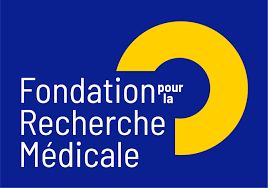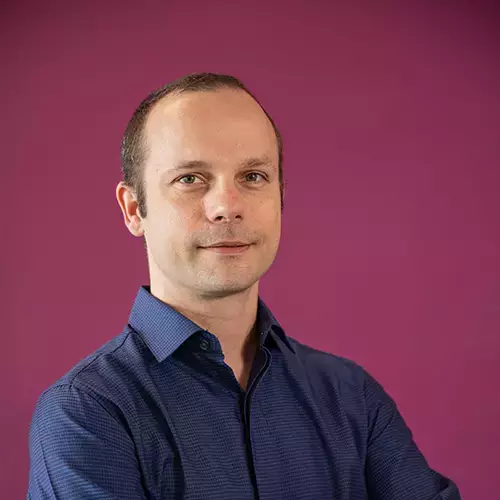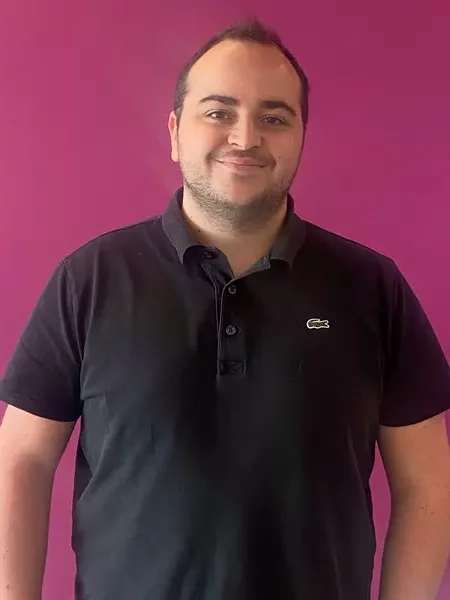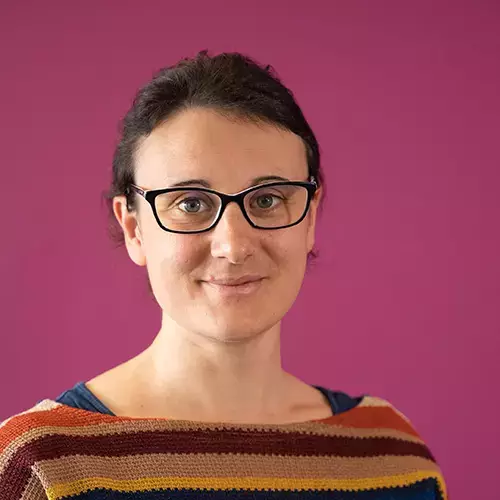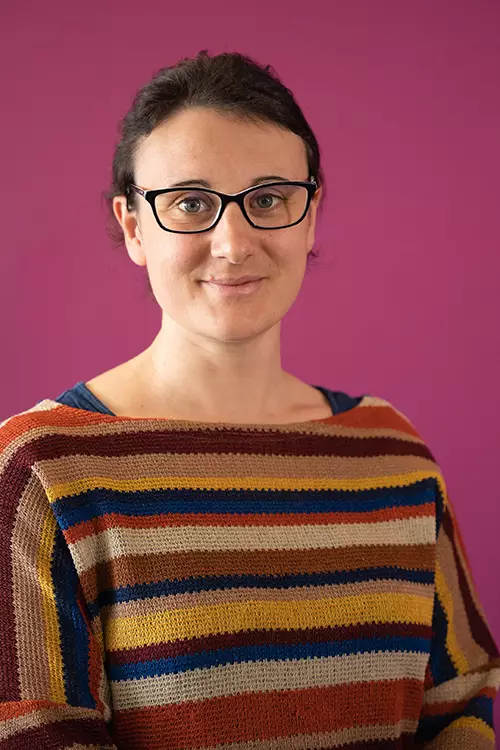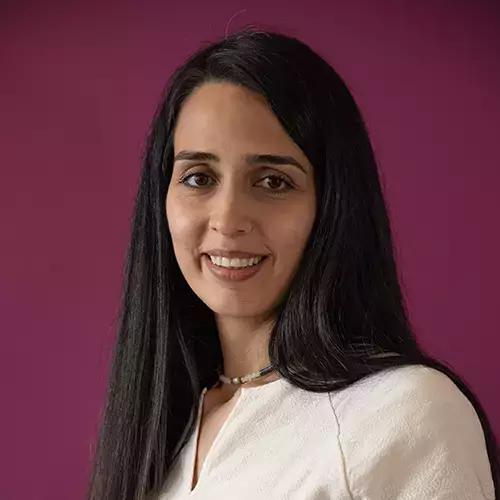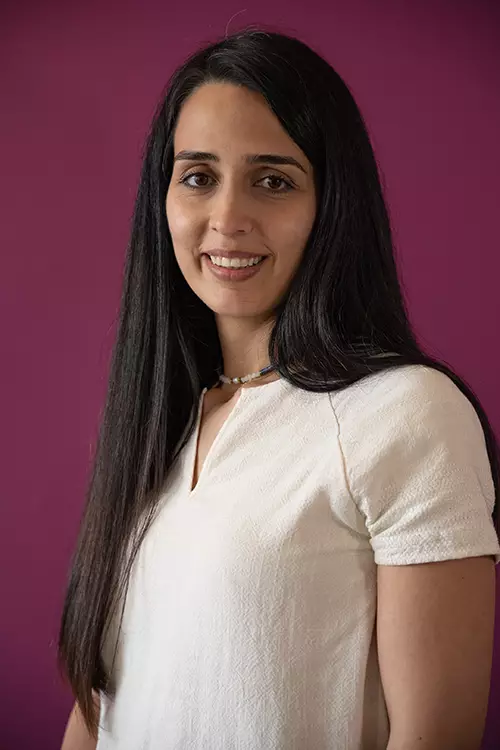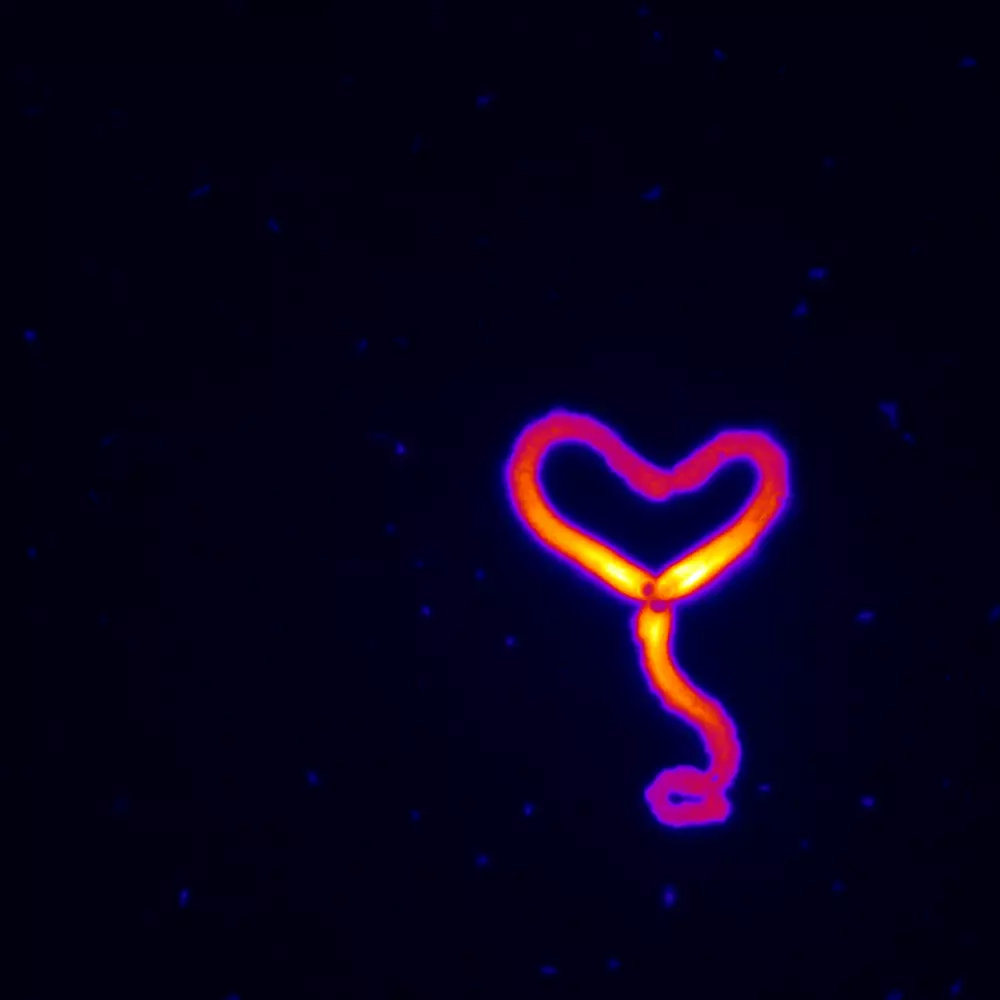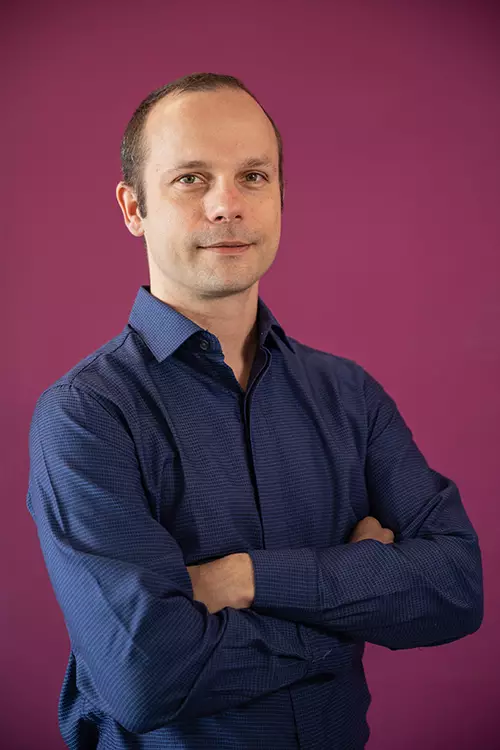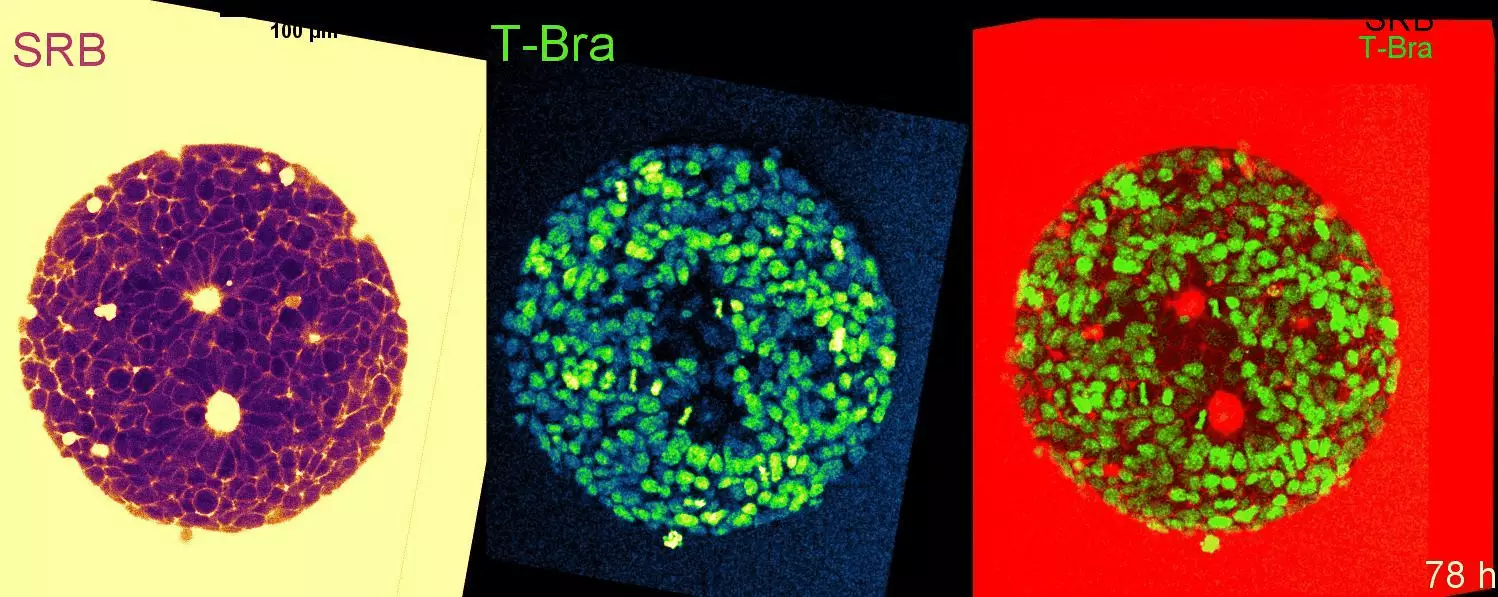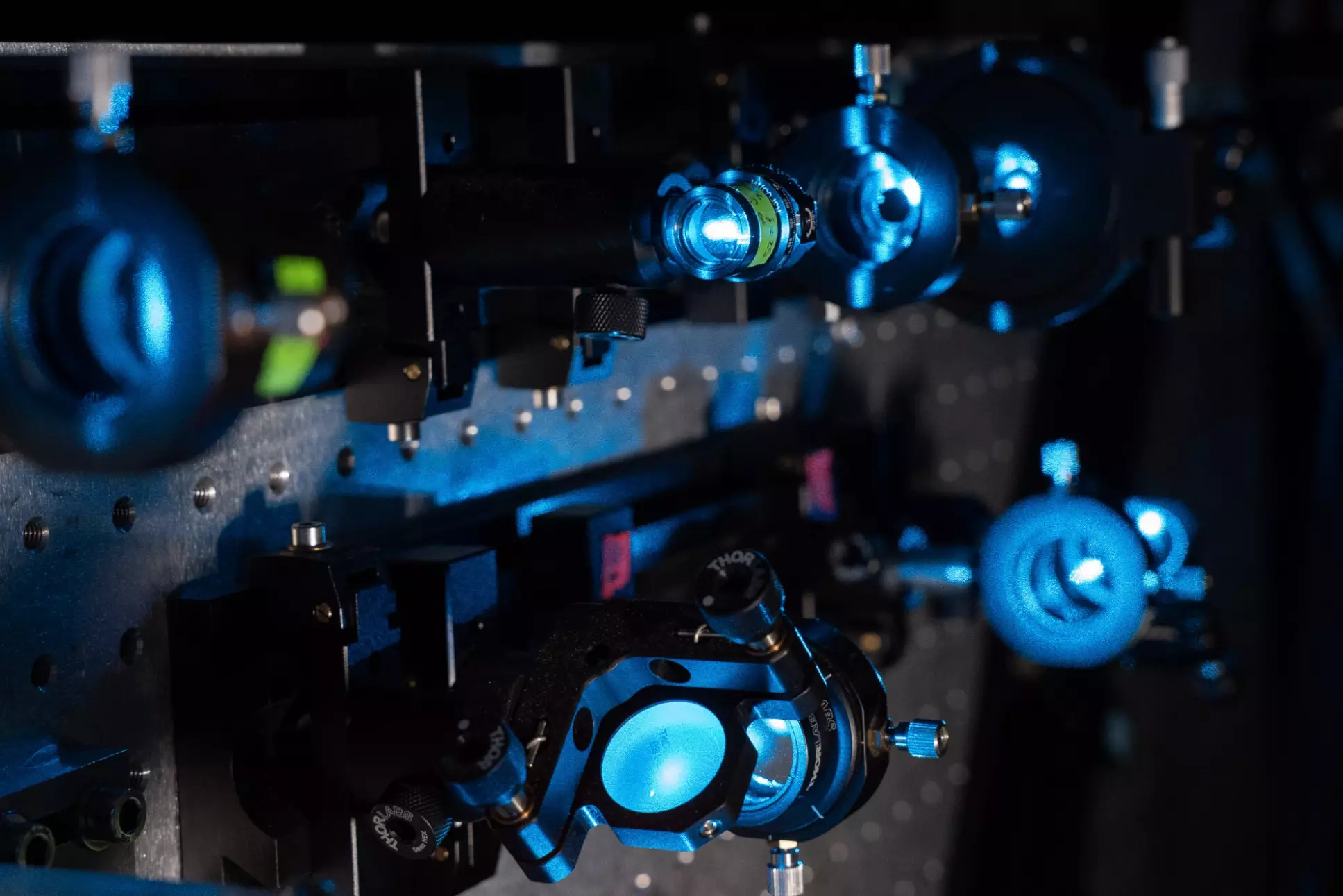Principes physiques et moléculaires régissant l’organisation du cytosquelette
Notre objectif est de comprendre comment les protéines du cytosquelette coopèrent pour que les cellules exercent des forces ou résistent aux contraintes mécaniques.
Le cytosquelette cellulaire est composé de protéines qui peuvent se polymériser sous forme de tubes ou de filaments. Ces polymères biologiques forment un maillage dense et organisé qui permet aux cellules de résister aux contraintes mécaniques, ou d’exercer des forces par l’action de moteurs moléculaires ou provenant de la réorganisation de ces réseaux. Le cytosquelette est essentiel pour de nombreuses fonctions cellulaires comme la migration ou la division.
Tous les organismes vivants connus possèdent un cytosquelette, et certains polymères comme l’actine et les microtubules sont extrêmement conservés chez les eucaryotes. Chez les mammifères, de nombreuses maladies et notamment certains types de cancers sont liés à des défauts du cytosquelette. Donc, comprendre d’un point de vue fondamental toutes les subtilités de son fonctionnement est essentiel pour expliquer certains comportements cellulaires pathologiques.
L’objectif principal de l’équipe est donc de comprendre comment les polymères du cytosquelette et leurs multiples protéines régulatrices associées fonctionnent ensemble dans la cellule. Pour résoudre ce problème, nous adoptons principalement une approche réductionniste basée sur l’idée que tout processus biologique est bien compris à partir du moment où nous sommes capables de le reconstituer à partir de ses éléments constitutifs les plus élémentaires. Notre travail consiste donc d’abord à identifier des molécules clés par des approches génétiques et de biologie cellulaire. Puis, la purification et l’analyse biochimique de ces composés nous permettent de prédire leurs fonctions au sein de réseaux d’interactions moléculaires complexes. Finalement, nous développons une variété de systèmes biomimétiques pour reproduire et analyser les comportements observés dans la cellule. Ce travail nécessite une forte interdisciplinarité, à la croisée de la biologie, de la chimie et de la physique.
Publications
The cellular slime mold Fonticula alba forms a dynamic, multicellular collective while feeding on bacteria
Specialization of actin isoforms derived from the loss of key interactions with regulatory factors
A Functional Family of Fluorescent Nucleotide Analogues to Investigate Actin Dynamics and Energetics
Mechanical stiffness of reconstituted actin patches correlates tightly with endocytosis efficiency
Sizes of actin networks sharing a common environment are determined by the relative rates of assembly
Architecture dependence of actin filament network disassembly
The cellular slime mold Fonticula alba forms a dynamic, multicellular collective while feeding on bacteria
Specialization of actin isoforms derived from the loss of key interactions with regulatory factors
Linking single-cell decisions to collective behaviours in social bacteria
A Functional Family of Fluorescent Nucleotide Analogues to Investigate Actin Dynamics and Energetics
Amoeboid Swimming Is Propelled by Molecular Paddling in Lymphocytes
Diversity from Similarity: Cellular Strategies for Assigning Particular Identities to Actin Filaments and Networks
Force Production by a Bundle of Growing Actin Filaments Is Limited by Its Mechanical Properties
Mechanical stiffness of reconstituted actin patches correlates tightly with endocytosis efficiency
Sizes of actin networks sharing a common environment are determined by the relative rates of assembly
Tropomyosin Isoforms Specify Functionally Distinct Actin Filament Populations In Vitro
Architecture dependence of actin filament network disassembly
Site-specific cation release drives actin filament severing by vertebrate cofilin
Cofilin-2 controls actin filament length in muscle sarcomeres
Membrane-sculpting BAR domains generate stable lipid microdomains.
Lsb1 is a negative regulator of las17 dependent actin polymerization involved in endocytosis.
Actin filament elongation in Arp2/3-derived networks is controlled by three distinct mechanisms
Mechanism and cellular function of Bud6 as an actin nucleation-promoting factor.
Determinants of endocytic membrane geometry, stability, and scission
Building distinct actin filament networks in a common cytoplasm
The formin DAD domain plays dual roles in autoinhibition and actin nucleation.
Reconstitution and protein composition analysis of endocytic actin patches
A “primer”-based mechanism underlies branched actin filament network formation and motility.
Stochastic severing of actin filaments by actin depolymerizing factor/cofilin controls the emergence of a steady dynamical regime.
Actin-filament stochastic dynamics mediated by ADF/cofilin.
Attachment conditions control actin filament buckling and the production of forces.
Villin Severing Activity Enhances Actin-Based Motility in vivo
A novel mechanism for the formation of actin-filament bundles by a nonprocessive formin.
The formin homology 1 domain modulates the actin nucleation and bundling activity of Arabidopsis FORMIN1.
Actualités
Un mécanisme pour expliquer la spécialisation d’isoformes d’actines malgré leur similarité
Nos résultats permettent de proposer un modèle simple et efficace sur la façon dont le vivant a pu générer de nouvelles fonctions grâce à l’utilisation de nouveaux isoformes d’actine.
L’équipe d’Alphée Michelot, en collaboration avec l’équipe de Pekka Lappalainen (Université d’Helsinki), a identifié et caractérisé une famille d’analogues nucléotidiques fluorescents très sensibles et structurellement compatibles avec l’actine.
Mechanical stiffness of reconstituted actin patches correlates tightly with endocytosis efficiency
Une collaboration multi-disciplinaire entre l’équipe d’Alphée Michelot et l’équipe d’Olivia du Roure et de Julien Heuvingh à l’ESPCI publie dans PLoS Biology une étude montrant que la rigidité mécanique des patchs endocytiques d’actine est fortement liée à l’efficacité de l’endocytose.
L’équipe d’Alphée Michelot publie dans Plos Biology un article expliquant comment les cellules contrôlent la taille de multiples réseaux d’actine au sein d’un cytoplasme commun.
No jobs opportunities found..
Membres de l'équipe
Alumni
Les organismes qui nous financent

